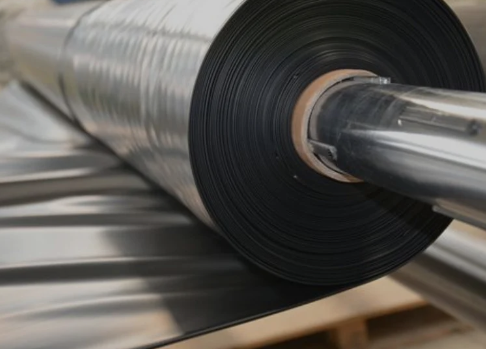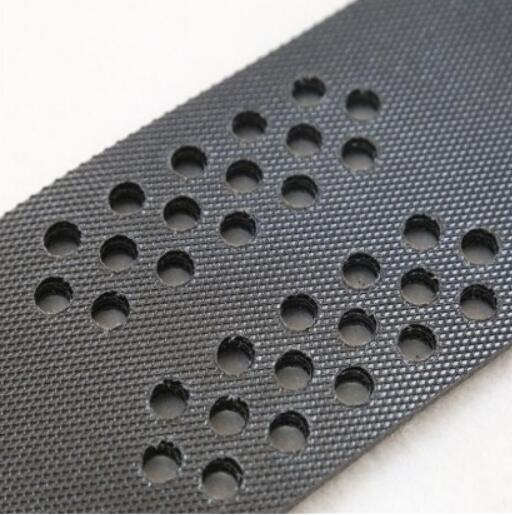- Understanding the Role of Geomembrane Liners in Waste Management
- Innovations in Geomembrane Liners for Water Management
- Geomembrane Liners: A Comprehensive Guide
- The Future of Geomembrane Liners in Civil Engineering
- Geomembrane Liners: Enhancing Landfill Stability
Manager:
WhatsApp:+86 177 0135 2670
Tel:+86 177 0135 2670
Email:marketing@okorder.com
Address:3rd Floor, No.2 Building, No.1 Sanlihe Road
How thick is a HDPE geomembrane?
HDPE geosynthetics are increasingly used in civil engineering and environmental applications due to their high tear resistance, flexibility, and imperviousness. The key factor considered when selecting hdpe Geomembrane is the thickness because it affects its performance, behavior and life within containment systems. This article explores options for HDPE geomembranes thickness, factors affecting the choice of thicknesses as well as the significance of thickness in effective containment.

Understanding the Thickness of HDPE Geomembranes
The wide selection of HDPE geomembranes in various thicknesses makes them suitable for different types of containment applications. Typically, the thickness of a typical HDPE geomembrane is measured in mils (1 mil = 0.001 inches) or millimeters (mm) with thickness ranging from 0.5 mm to 3.0 mm (20 mils to 120 mils) or more being very common ones. Appropriate thicknesses are selected based on project specifications such as site conditions, environmental requirements and performance criteria.
Factors Influencing Thickness Selection
Several factors can affect the right choice of gauge for an HDPEgeomembrane:
1.Containment Application: The type of containment application dictates how thick an HPDEgeomembrane should be, depending with what it contains. For instance, thicker geomembranes may be needed for situations involving hazardous waste or industrial chemicals or aggressive chemicals so that they can provide superior barrier properties as well as chemical resistance.
2.Site Conditions: Substrate conditions soils profile topography hydrology among other site specific factors influence the gauge selection for an HPDEgeomembrae; hence rough or abrasive substrates, sharp objects or things like ground movement may require thicker geomembranes to withstand mechanical stresses avoiding piercing and tearing.
3.Design Considerations: Parameters such as slope loading conditions hydraulic pressures exposure to environmental factors like UV rays and changes in temperature are used to determine the thickness requirements of an HDPEgeomembrane. In order to have long term performance and stability, a geotechnical analysis hydraulic modeling and environmental assessment can be used to select a suitable thickness for geomembranes.
4.Regulatory Requirements: Regulatory agencies may prescribe minimum thickness for geomembranes used in specific containment applications so as to ensure compliance with environmental regulations, safety standards and performance criteria. Meeting these regulatory requirements is necessary for getting permits, approvals or certification for such projects.
Thickness Options for HDPE Geomembranes
HDPE geomembranes come in different thicknesses that suit various project needs and performance specifications:
1.Thin Geomembranes (0.5mm-1.0mm): Thin HPDEgeomembranes are usually employed when there is a need for affordable options, flexible designs and easy installation as compared to long life serviceability demands and barrier properties. Thin membranes can also be useful in temporary secondary containment like agricultural ponds, decorative ponds, etc.
2.Medium Geomembranes (1.0mm-2.0mm): Medium-thickness HDPE geomembranes provide a good balance between cost, flexibility, and durability hence can be adapted to many containment conditions. They exhibit acceptable liner properties including strength against puncture together with chemical resistance suitable for landfill liners as well as industrial ponds; waste water treatment facilities plus reservoirs among others.
3.Thick Geomembranes (2.0 mm – 3.0 mm or more): Thick HPDEgeomembanes are manufactured having high mechanical strengths apart from superior barrier properties so that they can last longer under stressful conditions encountered in tough containment applications being undertreated by them. Such thick membranes would be installed on sites where hazardous waste is contained during mining operations; storage facility of chemicals; crucial environmental projects requiring robust performance.
Importance of Thickness in Containment Systems
The thickness of HDPE geomembrane is very important as far as containment systems' effectiveness, integrity, and longevity are concerned:
1. Barrier Properties: The barrier properties of an HDPE geomembrane are controlled by its thickness directly with regards to liquid and gas tightness. Geomembranes that are thicker act as better barriers against fluid migration thereby reducing the threat of leakage, contamination, or environmental pollution.
2. Mechanical Strength: Thicker HDPE geomembranes exhibit high mechanical strength and resistance to puncture, tear and abrasion. Thick geomembranes retain their integrity even under elevated loads, stresses or dynamic forces ensuring that they can be reliably used in containment for challenging environments.
3. Durability and Longevity: Compared to thinner membranes, thicker HDPE geomembranes have a longer service life and better resistance against degradation, UV radiation, and other environmental factors. So that these membranes can resist aging more effectively, embrittlement will be reduced by increasing their diameter.

Conclusion
In summary, the thickness of an HDPE geomembrane is a significant factor which determines its suitability for use in containment applications due to its performance values and durability levels. The correct thickness for the membrane depends on issues like containment application, site conditions, design criteria, regulations perspective criteria from various stakeholders involved in the project implementation process etc. When considering these parameters it is therefore possible for engineers together with other stake holders such as management team to ensure that there exists effective storage facility also which stands up well over the long term utilizing HPDE materials in this context
- Previous:What is the difference between geomembrane and HDPE?
- Next:What is the most widely used geomembranes in current use?
-
2024-12-05Geomembrane Liners: A Comprehensive Guide






